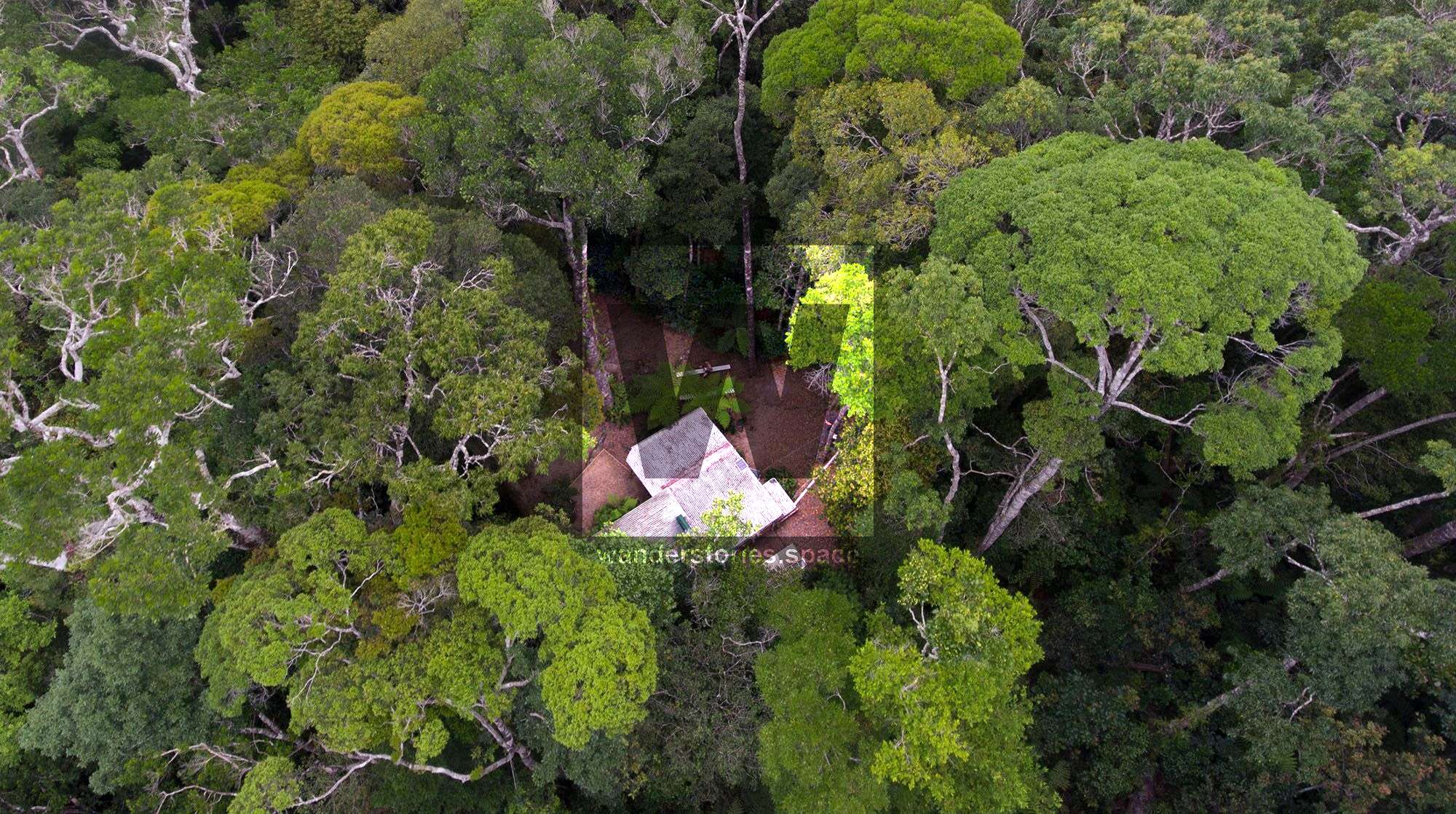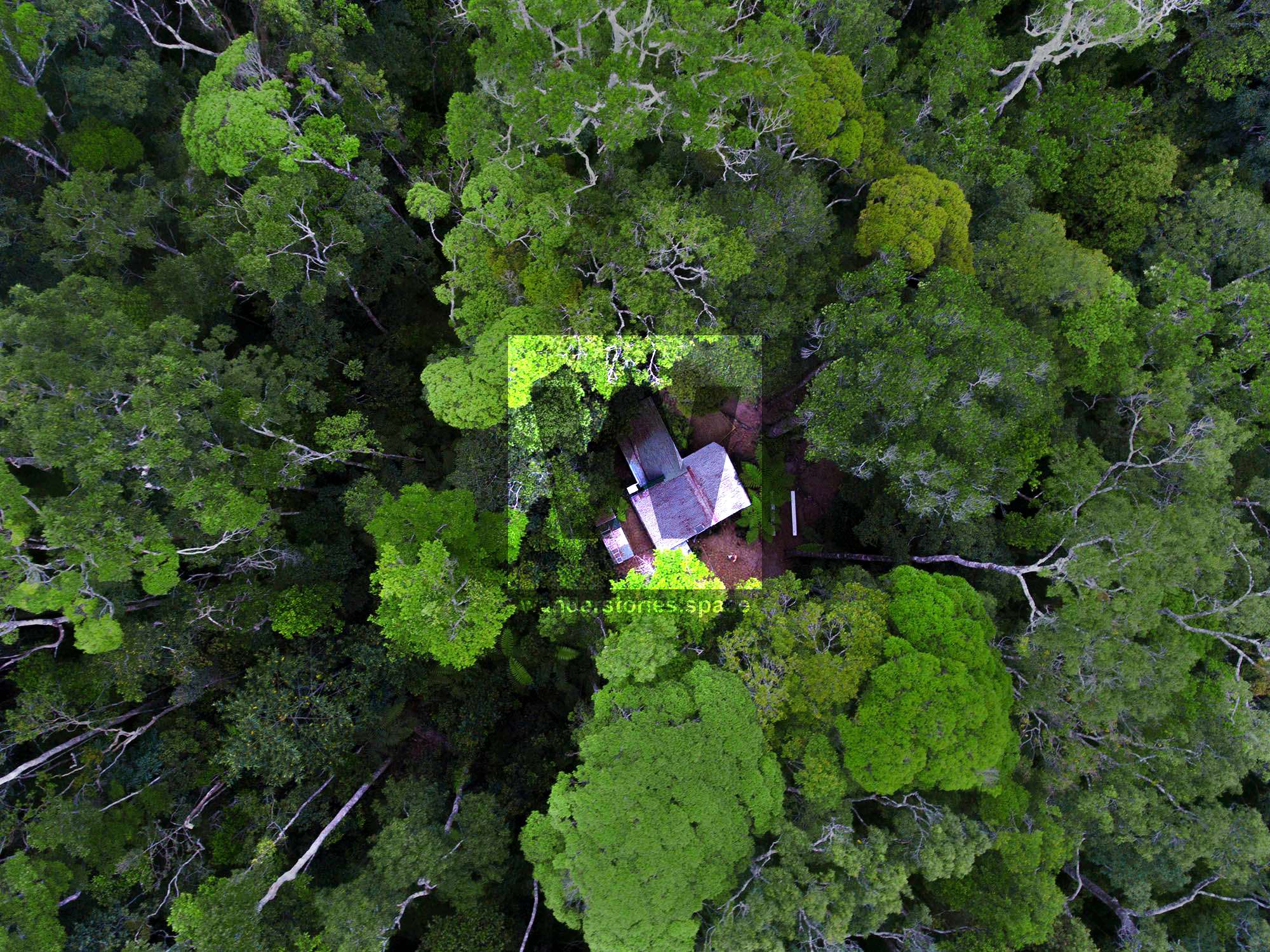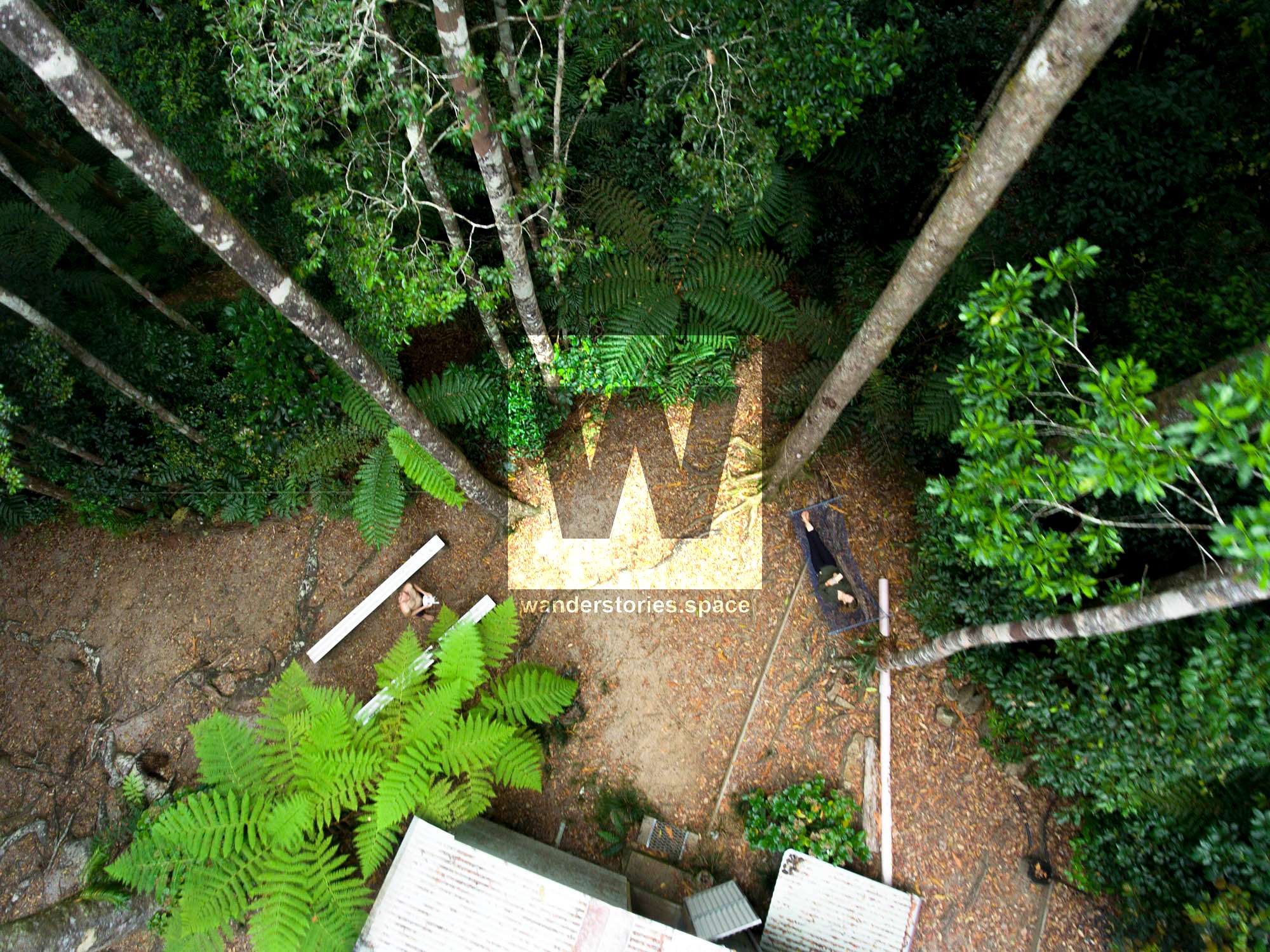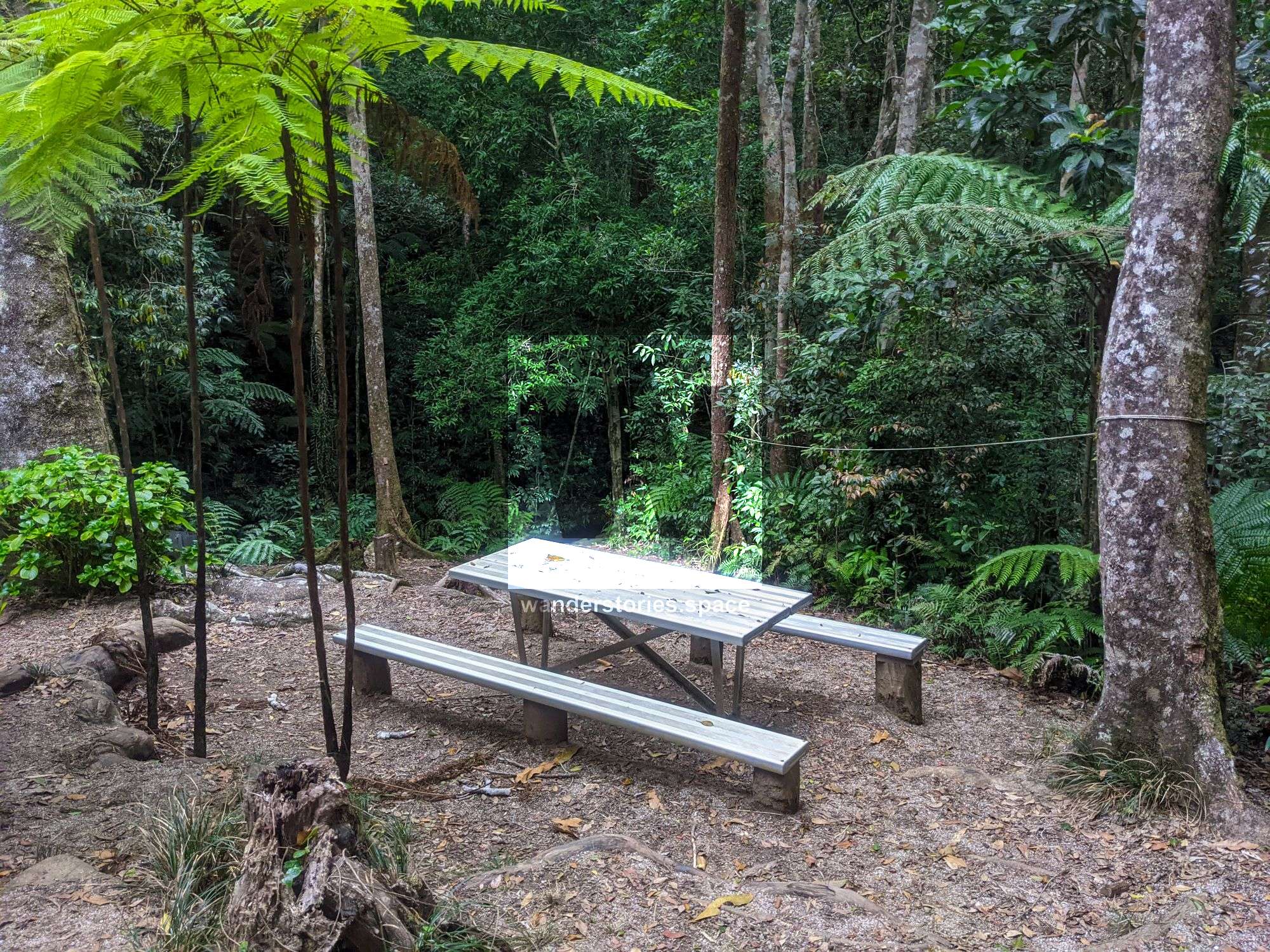DCK Shelter
The DCK Shelter is a house-like hut located in the heart of Paluma Range National Park and erected on private property which is owned by Wilfred Karnoll. The DCK Shelter has cooking equipment, a shower, and overnight camping facilities available.

Location - Paluma Range National Park, North Queensland, Australia
Distance - ~8 km
Duration - ~2 hours one-way from Paluma Dam
Grade - 3, easy
The DCK Shelter, also referred to as the DCK Hut, is a house-like structure erected on private property and owned by Wilfred Karnoll on a perpetual tin miner's lease. This private property with its roofed shelter is in the heart of Paluma Range National Park and is available for anyone to use. The DCK Shelter has cooking equipment, a shower, and overnight camping facilities available. Please respect that this is private property and leave it neat and tidy for the next visitor. If you intend to stay overnight, you need a confirmed booking with Wilfred and Suzanne.

As you approach the shelter, you will see a plaque. The plaque commemorates Diane Clare Karnoll's disappearance in the Mount Spec area on 16.10.1988 at the age of 33 and also marks the spot where Jason Michael Karnoll's ashes were scattered. Jason died on Castle Hill in Townsville on 01.02.2010 at the age of 32. The DCK shelter commemorates their lives.
On arrival, please read the rules of the property and respect that this is private property.
Please note that the DCK Shelter acts as an emergency shelter if a bushwalker is injured—please do not abuse this privilege.
How to make a booking
The DCK Shelter belongs to Wilfred and Suzanne. If you would like to stay at the DCK Shelter, please contact them via email at [email protected] or by phone at 0447 822 626.
They are extremely generous by making this shelter available to the public, and it is a great place to stay for anyone interested in bushwalking and exploring the Wet Tropics World Heritage area. However, they do ask to be contacted to make a firm, confirmed booking to stay there overnight. This is a requirement, and anybody not complying with this rule risks that the shelter will not be available to anybody. In the past, people have stayed at the shelter without permission. If this continues to happen, the next step will be to remove all references to this PRIVATE property, remove signage directing people to the shelter, and obscure the tracks leading to it.

What the DCK Shelter provides
- Running water
- A hot water system powered by fire
- Shower (with hot water)
- Pit latrine - a compostable long drop toilet
- Cooking equipment and gas
- A bedroom big enough to sleep six people (sleeps four comfortably)
- Two large camping platforms
- A few camping mattresses and sleeping bags
- Cutlery and dishes
- Tables, chairs, and a hammock
- Solar lighting and two USB charging ports
- Emergency food (needs to be replaced if used)

What you need to bring
- Backpack
- Appropriate footwear
- A map
- Proof of consent from Wilfred or Suzanne to stay at the shelter (printed or on your phone)
- Food for your stay
- Butane gas cartridges for use with the camping stove
- Water for the two-hour hike in
- A sleeping bag, a sleeping bag liner, or linen
- A water filtration or sterilisation system if you are not comfortable drinking creek water

A perfect day hike from DCK Shelter
There are several ways to go about a day hike due to the numerous trails. First, visit Garde's Battery and Garde's Hut Clearing and inspect all the artefacts - But please do not take anything! Then cross the stream again and head towards the Wine Cellar. From there, continue uphill to the Tin Mines, where you can see shafts left behind from the late 1800s. Continue on to Buttercup Lookout and Mount Spec before walking to Shay's Clearing and dipping your toes into the refreshing waters of Diorite Falls.
After relaxing and enjoying Diorite Falls all to yourself, some continue to rock hop downstream a couple hundred metres to the northern track and head back to either the shelter or the cars at the dam.
Printable topographical maps download (PDF)
Interactive Map
See also about the walking trails up at Paluma.
Alternately, you could do a day trip to, or return via, Gold Creek Falls and Crystal Creek Falls.

Tips and other information
- First aid kit is in the sleeping area under the bunk on the right hand side.
- Games and reading materials can be found in the sleeping area above the door.
- A small solar panel powers the DCK Shelter. The 12VDC electricity is on a three-hour timer. To use any of the electric lights, you have first to press the three hour timer button labelled "Light Master Switch" to energise the system. You can then use any of the lights via individual switches. The power will automatically be cut off after three hours. If more lighting is required, just press the timer button again. Two USB ports (5VDC 1A / 2.1A) are available for charging mobile phones inside the cabinet, which also requires the three-hour timer button to be pressed. Little direct sunlight reaches the solar panel, so please use the available battery power sparingly and turn lights off when not in use.
- Wilfred Karnoll has spent a lot of his time researching and restoring the trails in Paluma. He is available for guided tours, like the Paluma Village to Paluma Dam, Mount Spec to Jourama Falls trails, and learn about the Paluma mining history and Hidden Valley.
- Inside the main box is a guest book (please record your visit) explaining a few things about the shelter. In the back of the book are a few helpful hints. Next to this note are some maps of the area; please take one. Please respect this facility, as the next person might rely on this sparse supply.
- Unmarked, deep, open mine shafts are located close to the walking track, around the shelter, and through the Mount Spec area of Paluma National Park. Leaving the walking track can result in a fall down a mine shaft.
- The nearest cellular mobile reception (Telstra) is at Buttercup Lookout.
Rules of the shelter
- Only light a fire in the metal fire pot in the fireplace.
- Use firewood stacked under the wooden deck at the front of the shelter. The smaller you chop the firewood, the better it will burn. Any side of a piece of firewood should measure no more than 25mm.
- Do not burn any rubbish in the fireplace, e.g. soup packets and milk poppers - as they are lined with Al-foil, which does not burn.
- For a warm shower, place the fire pot at the rear of the fireplace, under the copper coil in the chimney and maintain a reasonable fire for 30 minutes.
- On departure, leave the hot ashes in the fire pot only if the pot is cold to the touch. Otherwise, the ashes should be emptied into a container outside, next to the water tap.
- Carry all the rubbish out with you! If you carried an entire container in, it shouldn't be too heavy to carry it out empty. Please take all food scraps and rubbish out with you, including empty gas cylinders.
- Do not leave perishable food or open packets behind; it will save somebody else carrying them out when they go off.
- During your overnight stay, store all food in metal cupboards; this discourages unwelcome visitors, such as white-tailed rats.
- Use the battery power sparingly and turn the lights off when not in use.
- Do not throw food scraps, even small crumbs, into the surrounding bush for the same reason.
On arrival, run the outside tap at full flow for 10 minutes to flush any sediments out of the pipe.Update 2019: a new sediment separation tank has been installed, so this step no longer applies.- The council-approved toilet is the one uphill from the toilet track; please follow the instructions on the wall.
- Do not put wet wipes down the toilet. They do not biodegrade and must be hand-picked out when emptying the tank.
- Before departure, please make sure the toilet is clean, the seat is down, and the toilet paper is returned to the storage cabinet.
- It is a long way to the toilet in the middle of the night, but please make an effort to avoid smells near the shelter.
- After washing up, please make sure everything is dried thoroughly; otherwise, mould develops in the cupboards. Tea towels should be hung over the fireplace to dry.
- Please sweep the shelter when leaving. The broom is stored under the roof, above the table. When you sweep out the shelter, pick out any rubbish. Only leaves, wood chips, and soil are to be swept outside.
- Please remove the gas cylinders from the gas stove and store them in the storage cupboard with the empty kettle.
- Avoid leaving alive leeches at the shelter, as this promotes their breeding there. If you have leeches, be sure to spray them with insect repellent before flicking them outside.
- Please put everything back where you found it.
- Please do not leave anything behind without asking Wilfred or Suzanne first.
- Please record your visit in the visitors' book.
- Please contact Wilfred and Suzanne if there is something that needs to be attended to.
- Most importantly, enjoy your stay.
This article, and all other articles, are for entertainment purposes only and are not to be used as a guide. Please see our Disclaimer for more information.

